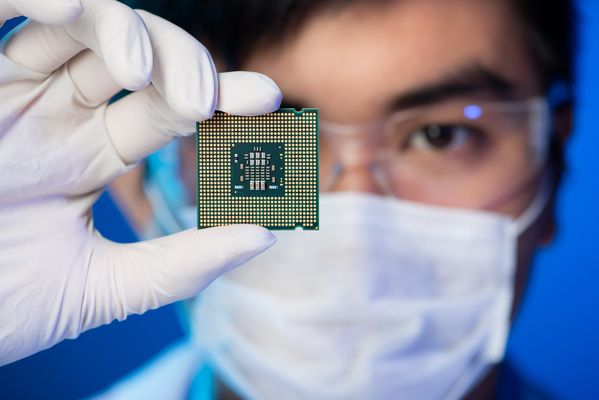Analog Devices (ADI +0.65%) looked like a good bet at the beginning of the year thanks to a clutch of notable catalysts, an attractive dividend, and growth potential. The chipmaker has not disappointed so far, but a few signs of weakness have started emerging.
Analog's fiscal third-quarter results (out in August) revealed a slight drop in revenue and margins, which eventually hurt the company's bottom-line performance. Its adjusted earnings per share fell an alarming 17% year over year to $1.26 in the third quarter on the back of a 5% revenue decline.
ADI data by YCharts. TTM = trailing 12 months.
With Analog stock having delivered close to 30% gains this year, should investors hit the sell button before things get worse? Let's find out.
What's ailing Analog Devices?
It is not difficult to see why Analog Devices struggled last quarter. The addition of Huawei to the U.S. government's Entity List meant that it was no longer allowed to ship its products to the Chinese giant. The chipmaker had already warned investors that this would hinder its third-quarter performance.
The bad news for Analog investors is that its business with Huawei is not as strong as it once was, and the company is unsure of when and if things will get back on track. CFO Prashanth Mahendra-Rajah made this clear in the Q3 earnings conference call:
But at least for the near term, our Huawei demand has taken a step down from previous levels. As a result, we are planning for sales to this customer to be meaningfully below our previous mid-single-digit percentage range, which we discussed with you last quarter.
The company anticipates $1.45 billion in revenue this quarter at the midpoint of its guidance range, which represents a 9% decline over its prior-year period revenue.

Image source: Getty Images.
So top-line erosion is going to be greater this quarter. But the problem is that the Huawei situation alone is not responsible for the slowdown. An uncertain macroeconomic environment and a tense geopolitical climate are posing challenges.
A few red flags here
The industrial business segment accounts for half of Analog's total revenue. Sales from this segment dropped 4% year over year in the last reported quarter, and they are down 5% in the nine months of the ongoing fiscal year.
Analog points out that the aerospace and defense sub-segments within the industrial group are delivering impressive growth. But a slowdown in industrial automation and tepid demand for memory test chips on account of weakness in that industry are weighing on the overall industrial business.
The industrial automation market, for instance, is expected to hit a speed bump in 2019. Demand for industrial automation equipment is expected to rise at a slower pace of 3.2% this year as compared with last year's 4.7% growth, according to IHS Markit. This tepid growth can be attributed to a stark reduction in industrial capital-expenditure growth this year, which is expected to increase only 2.2% in 2019 after a strong jump of 7.1% last year.
The report points out that businesses are scaling back automation projects, manufacturing output is declining, and real GDP growth is expected to contract in key economies such as the U.S., India, China, and the Eurozone. So the industrial business will probably start turning around when the macroeconomic scenario starts improving.
Analog's automotive business is also feeling the heat because of a slowdown in auto sales. The business -- which supplies 15% of the company's revenue -- saw a 9% revenue decline last quarter. The bad news is that it might not turn around anytime soon as major automakers are cutting production.
Both General Motors and Ford are taking steps to curb production as auto sales in the U.S. are down 1.4% through September, according to Edmunds data. And the auto sales decline could accelerate in the coming years, according to Bank of America Merrill Lynch senior auto analyst John Murphy. He forecasts that U.S. auto sales could drop 30% by 2022.
Still waiting for signs of a turnaround
The end-market trends indicate that Analog Devices could be in for tough times. Moreover, the stock seems fairly valued right now with a price-to-earnings ratio of nearly 29, which is right in line with its five-year average trailing P/E multiple.
Thanks to the near-term headwinds, there might be an opportunity for investors to buy the stock at a much cheaper valuation in the future if the price tumbles. So it might be a good idea for Analog Devices investors to book profits in the current scenario and wait for concrete signs of a turnaround before going long once again. The company next reports earnings on Nov. 20.





